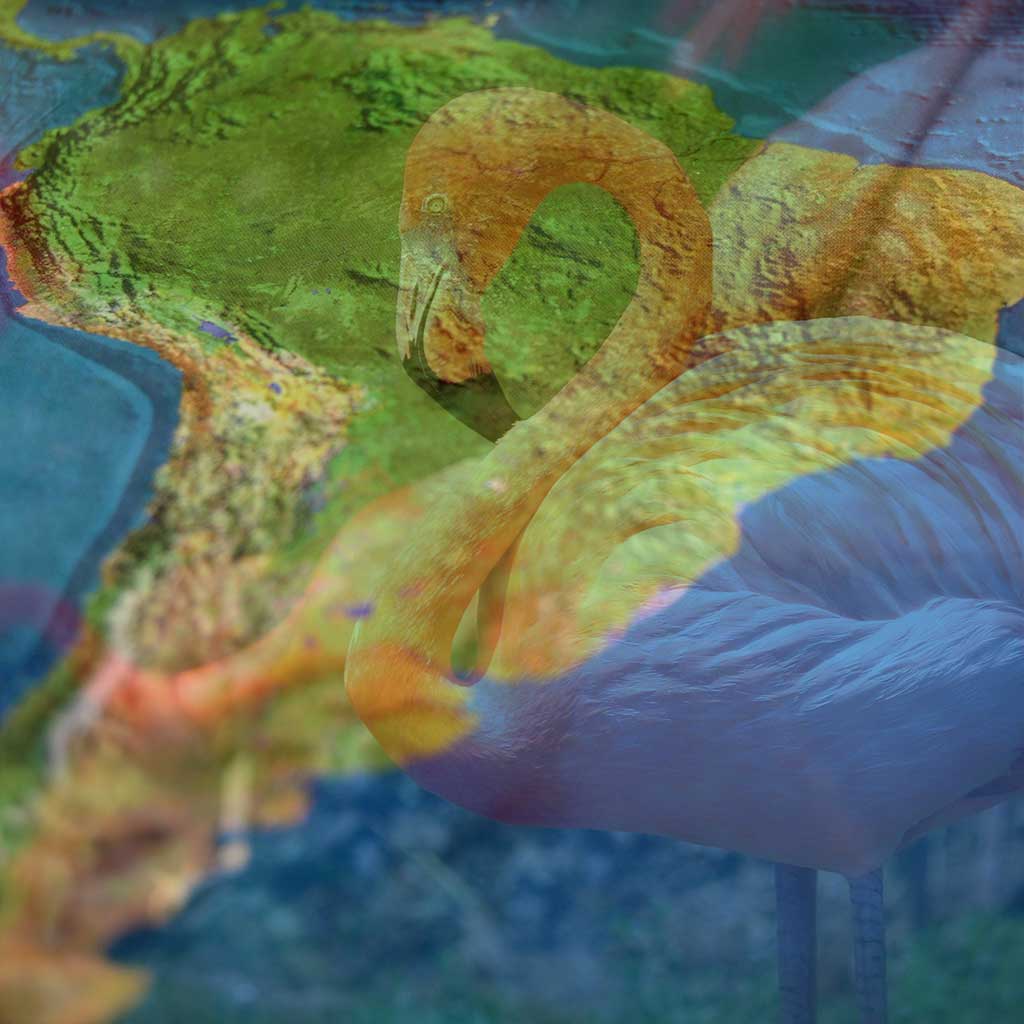Are There Really Blue Flamingos? The Final Verdict.
The Internet has sites with blue flamingo images and articles about blue flamingos. Are these claims real or invented? Let us get to the bottom of this.
So, do blue flamingos really exist? No, blue flamingos do not exist. Information about blue flamingos is a humorous hoax, and the photos of blue flamingos are created by image manipulation.
Most likely, one of the first sources of false information about blue flamingos is this site, presenting the “South American Blue Flamingo.”
The site is written tongue in cheek. It is a fun read, but all its claims, Latin words, and findings are invented by someone’s vivid and creative imagination.
Are Blue Flamingos Extinct?
There have never been blue flamingos – as far as we know. The whole story of blue flamingos now or in history is invented.
What other false flamingo news, legends, and tales there are?
Other flamingo legends are:
- Flamingo egg yolks are pink
- There are green flamingos
- One can make flamingo any color by feeding it with pigmented food
- There are black flamingos
So, let’s have a look at each of these claims.
So, Are Flamingo Egg Yolks Pink?
No, flamingo egg yolks are not pink, they are yellow with a variety of tones towards orange.
Those plastic-pink colored egg yolks that you may see online are definitely photoshopped.
But, Certainly, There are Green Flamingos?
Unfortunately, there are no green flamingos, either. This seems to be the next invented color tale and most likely inspired by the blue flamingo tales.
These green and blue color theories are appealing because flamingos consume a lot of green-blue algae, and one could think that this could theoretically make them green. However, this is not true.
There are reasons why all color pigments of the food that flamingos eat do not end up in their feather color. We will get to that in the next chapter.
OK, But Flamingos Could Turn Blue If We Feed Them With Blue Pigmented Food, Correct?
Flamingos are one of the best-know cases of birds that are getting their pink color from what they eat, but can they turn blue if fed with some blue pigmented food?
No, we cannot turn flamingos blue by feeding them blue pigmented food. So, this is a wrong theory.
We know that the flamingos pink color comes from the food that they eat and that if the food changes, the pink color either gets slightly lighter or more vibrant.
Animals do not change to the same color as the food they eat. For example, a lot of algae that flamingos consume are already green or blue. Some reason flamingos metabolism picks only carotenoid pigments from these algae, and this is what turns flamingos pink.
The pink color enhancing results that flamingos are experiencing are consequences of metabolism that the bird has. Flamingos happen to have the ability to intake carotenoids and turn these food pigments into their pink feather color.
If you are more interested in the compound that makes flamingos pink, look into the Wikipedia article about Astaxanthin that is the exact keto-carotenoid that is behind flamingos beautiful pink color.
Astaxanthin is available in algae, and animals that eat these algae are often are a reddish or pink color. Flamingos eath both the algae and the creatures that are containing Astaxanthin, such as shrimp. The Caribbean has a lot of these, and flamingos there are super pink.
Flamingos metabolism is creating then Canthaxanthin from the food Astaxanthin, and that is the pigment compound that we see as pink color in flamingos feathers and feet.
So, flamingos are good at picking Astaxanthin from food and turning it into pink pigment Canthaxanthin. But, flamingos cannot intake any known blue or green pigments from the food and turn them into blue or green feather colors.
What about black flamingo? Are they real?
Claims about the black flamingo, or at least one black flamingo individual, seem to be true!
There is at least one well known black flamingo case among bird watchers. Some say that it is the same bird that has been spotted mainly in 2 various locations, in Cyprus 2015 and Israel 2013.
This bird seems to have a rare pigmentation condition, melanism that can turn bird black. Melanistic animals are overproducing melanin, and this makes them black.
Other bird species have been followed to have the same rare melanistic condition, so we would say that the rumors and sightings about black flamingo are very much true.
The observed black flamingo bird does seem to be otherwise healthy and doing fine. And since flamingos live in wild 20-30 years (and sometimes even longer), many people have spotted this bird, mainly in Cyprus and Isreal.
